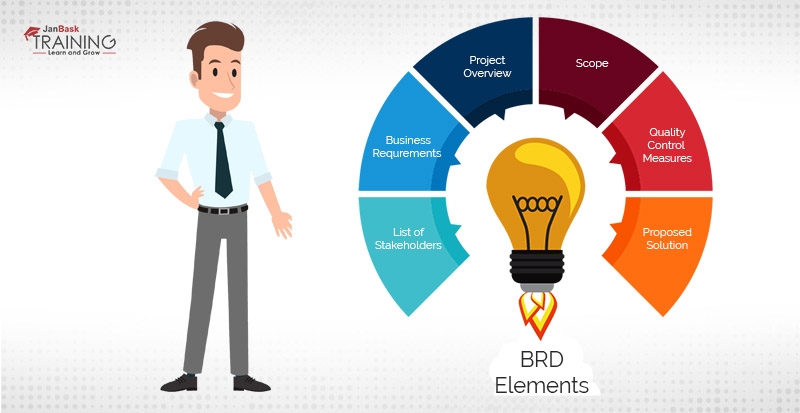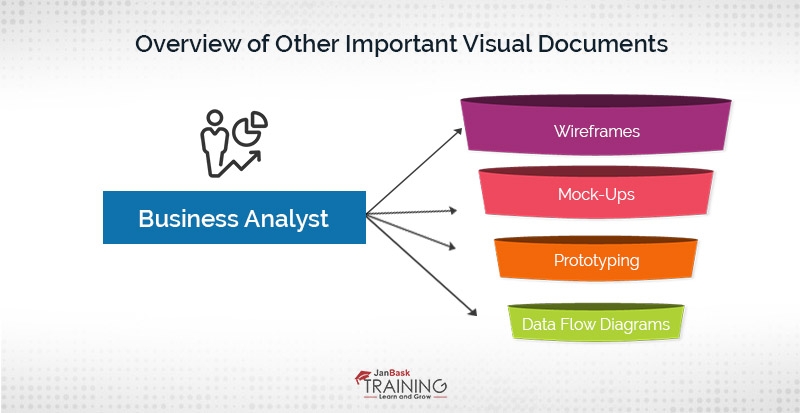05
SepIndependence Day Deal : Upto 25% off on live classes - SCHEDULE CALL
Documentations are sole proof which any business analyst holds for the analysis they perform for their work. Any kind of documentation is the same as code is for developers and test cases for testers. Documentations help to ensure that all the information is being tracked properly and reduces verbal confusion. A sense of transparency is being created by documents at various stages of the software development lifecycle.
In this blog, we will focus on various documents that are helpful in business analysis.
Project Charter document is the statement presented for a project which lists the scope, project objectives and stakeholders involved as part of that project. Primarily, it presents the role and responsibilities of each and everyone involved, key goals that need to be achieved as a result of the completion of this project and the power which the project manager would have over this project.
Sometimes, the request for a proposal is also known as a charter document. Framing the project charter document by the project manager is considered to be one of the best practices in the industry.
The reason, why the project manager prepares a charter document, are –
But, with the charter document, there is one more document that is very essential and it lists the entire scope of that project, called a project scope document. Actually, with the current agile environment, it would be good to call it a scope statement that captures key milestones to achieve, high-level requirements and assumptions that are being made. The scope of the project should always be kept in mind while working on the entire project. At the finalization of the scope document, each stakeholder gets all the important and every small detail related to the project. Remember the project revolves around five main elements – Business Goals, Delivery, Acceptance Criteria, Risks and Limitations, and Costs. Once all these are aligned it makes it easy for a project manager to finalize the project scope.

The document which showcases the details of business solutions with respect to the project forms the business requirement document. It is designed as per the need of the client and their expectations from the solutions. It can be said to lay the foundation of a successful project and details the problems which project is going to resolve with proper solutions for those problems.

Read: Customize Business Intelligence Analyst Resume In A Professional Way
Business Requirement Document acts as a blueprint for the stakeholders to prioritize tasks in the project, do the planning, make the appropriate design so that it is aligned with the needed business goals. Another important aspect of BRD is that it has the basic details of the contract between the customer and organization showcasing the deliverables to meet the expectations.
Objectives of this document are –
Learn Business Analyst in the Easiest Way

This document represents a holistic picture of the functions that would be performed as the end result of the feature which is being developed. This document should be written in such a way that it is understood by customers, the development team and internal stakeholders. It can be said to be the guiding specification around which testing would happen.
In the software development lifecycle, this document can range from high-level conceptual notions to capturing each and every small detail. It contains the application data flow and the UML diagrams. The person creating this document who is mostly a business analyst or system analyst needs to take care that this document is prepared from the user’s aspect.
Benefits of this document -
Now we all understand that matrix means something in the form of a table, and when spoken about requirement its where you work on them. So now this requirement traceability matrix is a document that maps requirements of a user with that of the test cases being designed.
During the initiation of the software development lifecycle, we have the need of the client in the form of requirements, and test cases are developed based on them. This matrix ensures that no gaps are there in software testing.
Read: Things You Must Know About The Business Analysis Process
Elements of this Matrix -
This matrix and its elements help to check that current project requirements are being met and thus, lead the path for the creation of requests to proposal documents for future enhancement. It is advisable that the testing team uses tools to make this matrix rather than struggling with excel to capture all the details.
Business Analyst Training & Certification

Whenever we speak about any requirement document, it is presumed that something related to business need or functional document which needs to be prepared. But then what about the software or system which needs to support the business. This document speaks about the software which needs to be developed.
This document is a continuous analysis of the business need much before a specific system design phase with the mission to reduce the redesigning problems. This document needs to be clearly understood by the development team so that there is no re-engineering process that comes up later in the picture.
Based on the project management methodology, whether to follow agile or waterfall, the level of details might change for this document, but it should have details of functional requirements, technical feasibility, assumptions, acceptance criteria, and end result. Whenever any technical details are being analyzed it becomes important to judge whether these would support the business need, the reliability and capability factor of the existing system.
Benefits of System Requirement Specification -
Now, this is a very critical document and is not always being used. Every organization maintains a customized format for themselves and this is used in migration projects. Some people also refer to it as a Migration Checklist where they capture high-level details of the migration project. The data migration document should have a detailed migration plan for the successful migration to happen. This step enables us to list down, transform and transfer them to a different location.
Read: The Power Of Use Case Diagrams
Examples where data migration document is being prepared -
This document list down the details as the steps which an organization follows for the data migration project -
Apart from the above formulated and standard documents, there are other important not so lengthy documents that act as a catalyst for these documents. Let’s see some of them.

Business Analyst Training & Certification

So, we all understand how important documents are and the vital information they hold. They are like business drivers and always catalyzes the complete project lifecycle. In your business analysis work, document everything that you encounter as part of analysis journey. I hope the documentation briefing would definitely increase your knowledge. Keep Growing and Keep Learning!!
 Pinterest
Pinterest
 Email
Email
The JanBask Training Team includes certified professionals and expert writers dedicated to helping learners navigate their career journeys in QA, Cybersecurity, Salesforce, and more. Each article is carefully researched and reviewed to ensure quality and relevance.

Cyber Security

QA

Salesforce

Business Analyst

MS SQL Server

Data Science

DevOps

Hadoop

Python

Artificial Intelligence

Machine Learning

Tableau
Search Posts
Related Posts
Receive Latest Materials and Offers on Business Analyst Course
Interviews